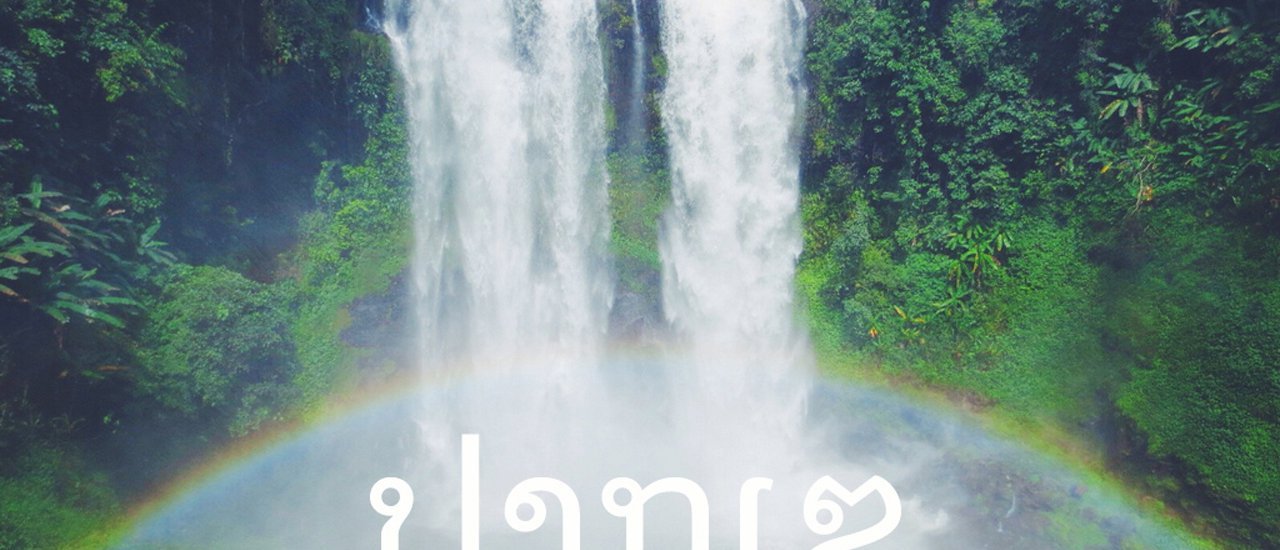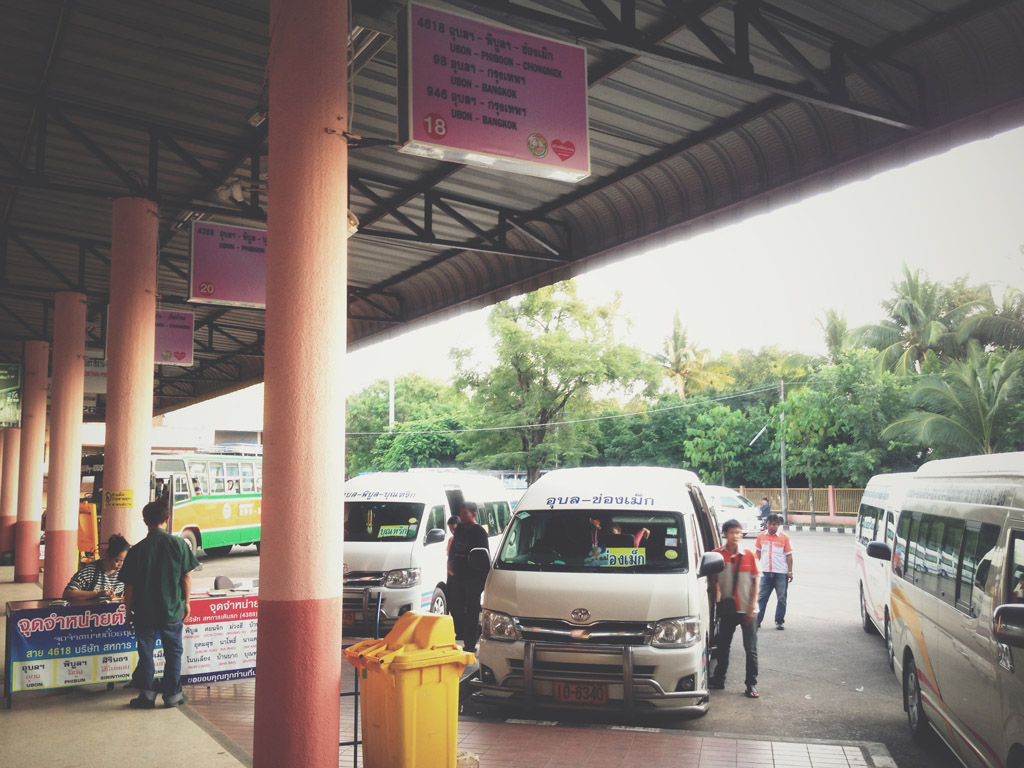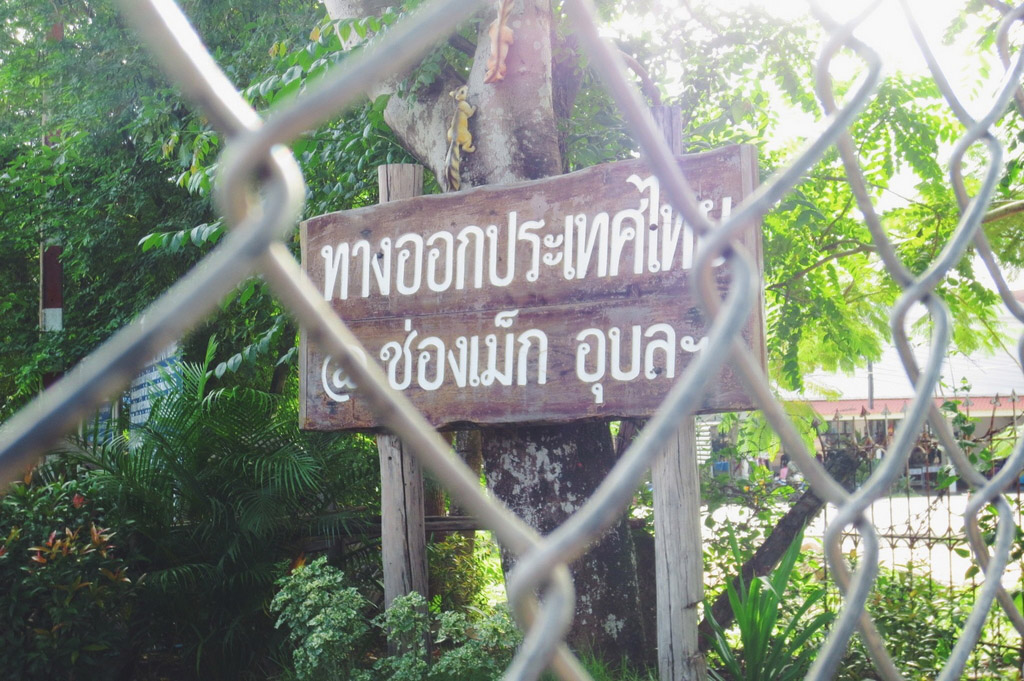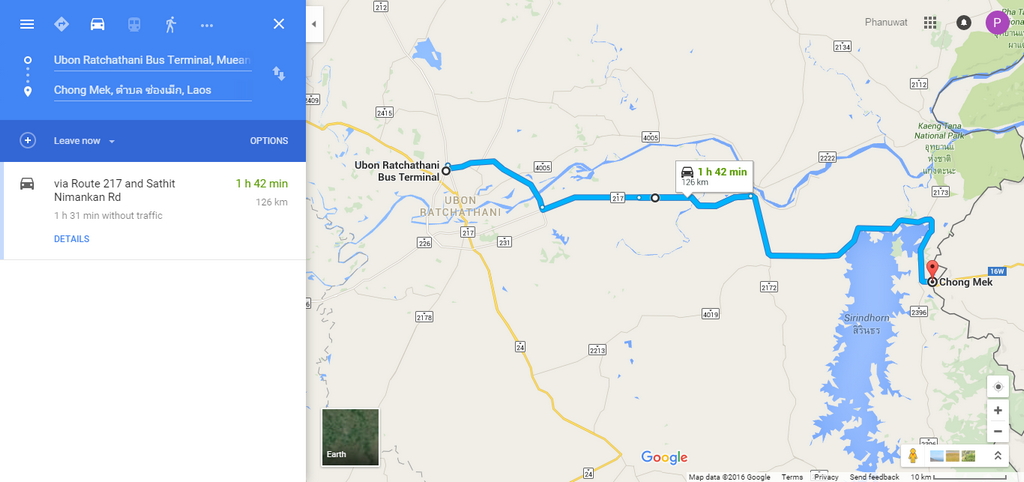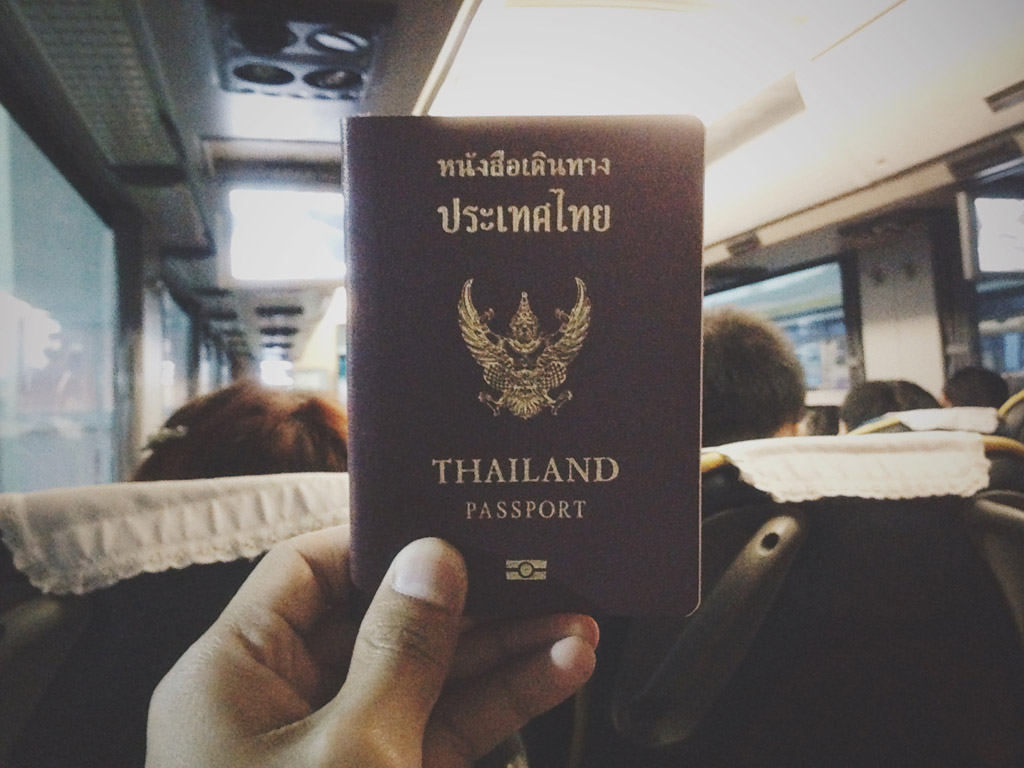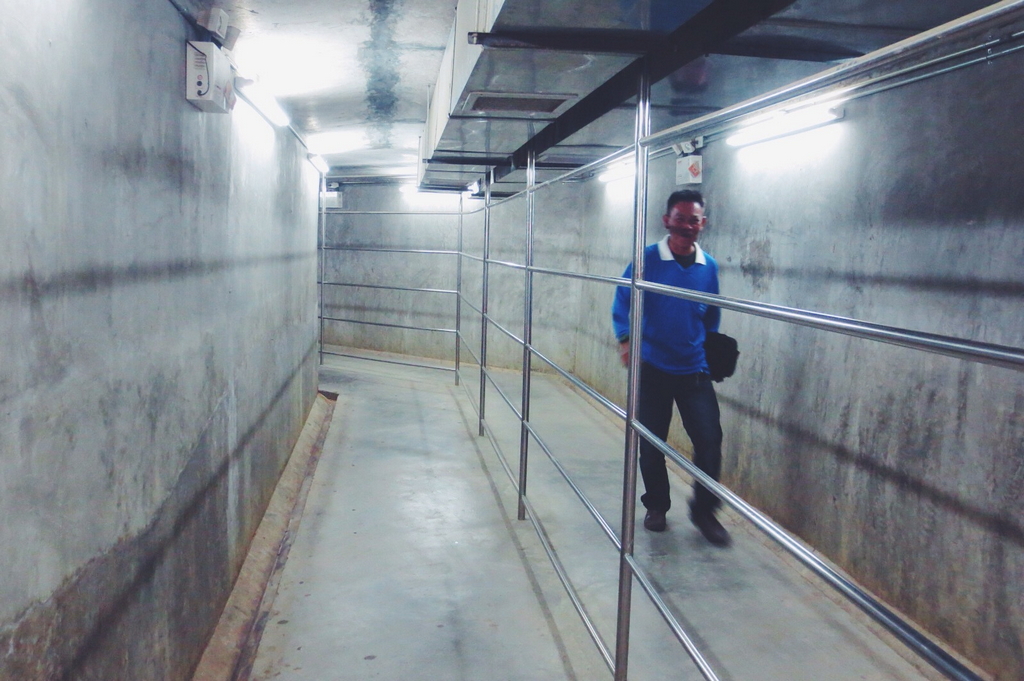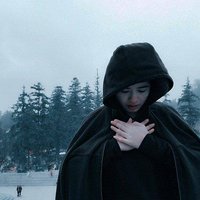
Chapter 1: Departure from the Mundane
“I love to travel. It allows me to see more of the world, to experience new things, and to escape from the daily grind.
Every year, I try to find new places to travel to in my own way." - Sunny Suwanmethanon
Sometimes the reason for traveling may come from the monotony of life that we have to face every day. Starting from waking up in the morning to go to work, going through the super congested traffic, sitting in front of the computer all day, not knowing what to eat during lunch break, getting off work and taking the bus home, some days it takes as long as going from Bangkok to Hua Hin. Eat, shower, play Facebook and then sleep. This is the cycle of life from Monday to Friday, some people may even reach Saturday.
We feel like machines that have been programmed and set to work without any awareness. But we are humans with thoughts and feelings, and we refuse to let ourselves fall into that state forever. So we try to find ways to add vitality and color to our lives. One of those ways is "traveling." We travel to escape the monotony of our daily lives, to recharge our bodies and minds, and to gather experiences that we cannot find in our offices.
But the feeling of familiarity never makes an appointment. It likes to come in during the period when the long holiday has not yet arrived, and the vacation days have been booked with other travel plans. How far can a salaried person with only weekends off travel?
LIFE IS A JOURNEY | Because life is a journey...

Chapter 2: Passport Because Music Takes You There
“Once you've lived, you should know who you love
The starlight and the vast sky are waiting for you to find the answer
If you don't try, you won't know, if you don't open it, you won't find it
Is your true life yours? The more you try, the more you know, Hoo Woo Woo Woo
And you will find what's in you" – 25 Hours
There are millions of songs in the world, but there are only a few that make you want to travel when you listen to them. The song "The Right Answer" is another reason that inspires and motivates us to travel this time. We set out to find the right answer from "Pakse".
Because of the monotony that occurred in a moment of life, coupled with listening to the song "The Right Answer" by the band 25 hours, we decided to travel to Pakse City, Lao PDR, which is about 687 kilometers away from our location. With the time available at that time only "Saturday and Sunday", we had to leave on Friday night and return to Bangkok on Monday morning.
How much of the atmosphere can you really experience by going there like that? The round trip would probably take up all your time and energy, right? This is probably a question that many people might be thinking about after reading this. Before I went, I had the same thought. So, can it really be done? Can it be done? We'll tell you.
Song "The Right Answer": https://www.youtube.com/watch?v=4_f1WMaXHgk

Chapter 3: Because Life Is a Journey
Traveling to Pakse, Laos, a land renowned for its natural beauty and culture, offers a variety of options. If you prefer a faster and more convenient option, albeit at a higher cost, especially without advance booking, flying is the way to go. For a slower but reliable and relaxing journey, the train is a good choice. If you're on a tight schedule and have no other options, like us, the bus is the way to go. However, all modes of transportation, whether plane, train, or bus, will get you to your destination. The only difference is the travel time, budget, and comfort level, which depends on your personal preferences.
Life is like a journey with many paths to choose from, leading to the destination we call "success." The time it takes to reach that destination depends on the path we choose. Sometimes the path is smooth, while other times it is filled with obstacles that delay our arrival. However, if we learn and adapt to these challenges, any path can lead us to our goal. The obstacles we face are the experiences of life, and life itself is a journey.
We set off from Bangkok on Friday night. After work, I rushed home to swap my computer bag for a travel bag, grabbed a bite to eat, and then hurried to catch the 9:30 pm bus. It seems my body always knows when I'm about to travel, making my blood pump faster than usual and making it hard to sleep due to excitement. But in the end, I fell asleep without realizing it.
I woke up to the morning light shining through the car window, which could have been annoying if it were headlights, but luckily it was natural light from a beautiful pink and orange sky, so I forgave it.

Chapter 4: Travel is Learning
The van was almost full, with only the back row where I was sitting empty. After a while, I started to feel hungry, so I took out the free water and snacks I had received from the tour bus and ate them while watching the scenery go by. I saved myself a meal.

After about an hour and a half, we arrived at the van terminal. From there, it was only a short walk of about 500 meters to the Chong Mek checkpoint, which was visible from a distance.

Travel map

At first glance, the immigration checkpoint building at Chong Mek looked like the diamond-shaped building of Bangkok University. It's quite stylish.

Before crossing the border, we stopped by a 7-Eleven to buy some supplies and necessities. There are two 7-Elevens in this area, less than 300 meters apart. After making our purchases, we went to the Thai border checkpoint to process our exit. We filled out the departure documents and were able to pass through easily without any fees.

After that, you have to walk through an underground tunnel to cross over to the Lao side. Along the way, there will be vendors waiting to offer you mobile phone SIM cards or transportation services. However, what I found pleasant was that the vendors here were not as pushy as in other places. Instead, they spoke softly and gently, almost making me give in. Perhaps this is another sales tactic, but it was effective nonetheless.

After surviving the shaky tunnel that could suffocate you if you didn't hold your breath, you finally reach the "exit of Thailand" that everyone has been desperately searching for. It's right here, so why haven't they found it yet? Whoosh!

This trip was very lucky because it was during the rainy season that we encountered very little rain. Throughout the two days we were here, the sky was clear like this. The advantage is that it is convenient to travel and easy to take pictures, but the disadvantage is that it is very hot (a hundred chickens). If you walk a little further, you will reach the Wang Tao immigration checkpoint, which is located on a hill by the road on the right-hand side. I didn't take a picture of it. What you see in the picture below is probably a checkpoint that is being built.

Upon arrival at the Lao immigration checkpoint, approach any available counter with an officer present and extend your hand to receive the border crossing document. After completing the form, proceed around the back of the building and queue at counter number 6 designated for foreigners. Present your completed border crossing document and passport along with a 100 Baht cash payment for entry. Exit is free of charge. Individuals without a passport can obtain a temporary border crossing document at the Thai side, near the traffic light intersection before reaching the Chong Mek checkpoint. The cost is approximately 30 Baht, and the document is valid for approximately 3 days and 2 nights.
With all the documents in order, we picked up a piece of paper and a marker pen bought from Thailand. We carefully wrote the word "Pakse" in Lao on the paper, following the template we had captured from Google. This would serve as a visual aid for us to hitchhike into Pakse city. As someone who enjoys hitchhiking but has never done it in a foreign country, I was eager to try it out in Laos.
Hitchhiking is more than just a way to save money on travel; it's an invaluable experience that helps build courage, resilience, and the ability to overcome inner fears. It also opens doors to new friendships along the way. However, it's not as simple as just standing on the side of the road and sticking out your thumb. There are techniques involved to ensure the safety of both the driver and yourself. We've written an article about hitchhiking techniques that you can use as a guide. If you're interested, check it out here: http://pantip.com/topic/33988130

After passing through the Lao checkpoint, you will come across a market and a bus station. People will shout greetings at you with the word "Sabaidee", as if they have known you for many rounds. Or maybe they think you are a celebrity? No, they are just shouting to get you to buy something or use the bus service into town. There are both vans and songthaews waiting, with all eyes on you as if they are waiting for you alone. As for the price, vans cost around 100 baht and songthaews 80 baht. Choose as you please, except for me.

We walked about five hundred meters past the bus stop to find a strategic point to set up camp and wait for a ride. A Laotian man named Tee parked his motorbike near where we were standing to cheer us on. But in reality, he had parked to wait to buy bananas from a truck that was being loaded. So we had the opportunity to talk and keep each other company while we were still waiting for a ride.
Most of the vehicles that passed by were buses. Almost every bus honked and invited us to join them. After several buses passed, we noticed something: buses had white license plates, while private vehicles had yellow plates, unlike in our country. So we only raised our hands to hail when a yellow-plated vehicle passed by.

Standing there waving until my back was soaked in sweat, after about half an hour, a pickup truck drove by. We quickly held up our sign, or rather, our paper sign as usual, and the car drove past like all the others that had passed. But the difference was that it stopped about 300 meters away, and the driver got out and waved for us to come over. Without hesitation, we ran over as fast as we could.
Upon arrival, I raised my hands in a wai and said "Hello" in a breathless voice, asking if they had passed through Pakse and if I could hitch a ride. Luckily, they had just passed through, so they told me to get in and sit in the front seat with them. However, I asked to sit in the back because I wanted to enjoy the scenery along the way.

The back of the car was full of things we had just bought from Thailand, but there was still enough space for us to sit and stretch our legs comfortably. On both sides of the road, there were houses and green rice fields that had just been planted. The road had just been completed, so it was very comfortable to sit on. We looked left and right, sometimes standing by the head of the car, leaning forward to enjoy the wind.

In no time at all, we arrived at the Lao-Japan Friendship Bridge, which spans the chocolate-colored Mekong River to the city of Pakse.

The car stopped to drop us off in front of the Daoreuang Market. The driver, whose name is Toon, is a military man. While Waew, a housewife who runs a grocery store near our house. Toon has a bright smile and seems to enjoy being photographed. Waew, on the other hand, is a bit shy and confused about how we are taking the picture. She wonders why we don't have someone help us take the picture.

Travel map

"The Morning Glory Market" is not only a place with a wide variety of goods for sale, but it also serves as a bus terminal. If you are coming from Wang Tao Checkpoint, this is the final stop.

Since the accommodation I had in mind was quite far away, about two kilometers from the market, I opted to use the services of a three-wheeled taxi driven by a man in a patterned shirt.

The car stopped in front of the "Vilaysing guest house", which is the hotel we had chosen from the internet. Actually, we could have booked it in advance, but most of the hotels we were considering were not expensive and it wasn't a peak season, so we just wanted to see the place before paying.

The room I was eyeing was full. The only room left was the biggest one, which cost around 500 baht, but they gave me a 100 baht discount. The room was very spacious, with two beds that could sleep about 3 people. It had a TV, a refrigerator, a water heater, a bathtub, and an air conditioner that sometimes worked and sometimes didn't. You could say that the price was super worth it, but sleeping alone was super lonely.

After packing our belongings and taking a shower, we walked out to exchange money and rent a motorbike at the shop next to our accommodation. We rented a Honda Wave 100 cc, which was in good condition, for 250 baht per day. Regardless of when we rented it, we had to return it before 8:00 AM. However, we negotiated to return it at our original time of 10:00 AM, and the owner agreed.

With the bike and rider ready, it's time to hit the road. The first destination is Tad Yeuang Waterfall, which is about 37 kilometers away. It's the farthest point of the day, and the road is quite rough, so extra caution is needed while driving.

After driving for a while, I felt the rear wheel start to wobble, so I pulled over to check. It turned out that the rear tire was flat. I continued driving, looking for a motorcycle repair shop to fill the tire. After driving a considerable distance, I found a shop on the side of the road. I pulled in and asked the price, which was about 5 baht per wheel. But when I finished filling the tire, they told me it was free. I had already thought that Lao people were kind-hearted.

From the main road, there will be a signpost with a picture of Tad Yeuang Waterfall on the right-hand side. Turn right following the sign onto a gravel road for about two kilometers, and you will reach the ticket booth and motorcycle parking area. Walk a little further, and you will start to hear the sound of the waterfall.

To see the waterfall cascading down the cliff, you need to walk down a rather slippery earthen staircase for a bit. You will then find a pavilion where you can admire the waterfall while being enveloped in its mist.

From the pavilion, you can walk down the path to climb a small hill that stands majestically facing the waterfall. This point will allow you to see the waterfall clearly without any obstructions. However, you must walk carefully as the path is very slippery.

"Tad Yeaung" is the most beautiful and challenging waterfall I have ever photographed. The powerful cascading water, combined with strong winds, creates a dense mist that resembles a rainstorm. We stood on the hillside waiting for the perfect moment to capture the scene, getting soaked in the process. If we were lucky enough to have sunlight shining through, a vibrant rainbow would appear, as seen in the picture.

After admiring the waterfall from below, I walked back up to the top to let myself dry off.

The top of this place is perfect for taking a walk, sitting and enjoying the view in a very relaxing way (a million chickens). Many Lao families come here to have a picnic and have fun (where are the Lao people?).



After exiting Tad Yeaung Waterfall, drive back the same way for about 1 kilometer. You will see a sign for Tad Fane Waterfall, but the sign will say "Tad Fane Lisod" on the left-hand side. Turn left and drive straight ahead until you reach the car park and ticket booth.
"Tad Fan" is the most magnificent and awe-inspiring waterfall we have ever seen with our own eyes. We gazed at the same view for a long time, and we never got tired of it. If you want to go down and see it from below, you will need at least a full day or you can stay overnight down there.

Riding a motorcycle in the sun all day, I felt very thirsty, so I stopped here to fill up with water and drink it to my heart's content.


The next destination is Pha Suam Waterfall, which requires driving back and turning right onto Highway 20 for about 30 kilometers. Along the way, we often try to find the kilometer markers that are scattered along the road, and choose the ones with beautiful angles to take pictures as souvenirs. Because we feel that it looks charming and cool. It was one of our intentions when we first saw this type of kilometer marker in a photograph.

I was driving along, enjoying the scenery, when I almost missed the turnoff for the waterfall. After parking the car, I walked a short distance, crossing a green steel bridge that offered a view of the bamboo bridge and the waterfall in the distance.

Take a few steps closer and you'll be able to admire the beauty of the waterfall up close. As for the origin of the word "s้วม" in the waterfall's name, it doesn't mean a place to relieve oneself. Instead, the Lao word "ส้วม" refers to the bridal chamber, or the room where the bride and groom spend their wedding night.


Our final destination for today is to watch the sunset at "Wat Phu Salao", which is located on a mountaintop near Pakse city. But right now, the clock says five o'clock in the evening, which means we only have about an hour and a distance of about 40 kilometers to go to make it on time.
Driving like a madman, at a speed of 60 hours per kilometer. Oops!!! That's a snail. Driving at a speed of 60 kilometers per hour. This is the fastest you can drive because the roads are not very good. I forgot to mention that they drive on the right lane here. I accidentally forgot to drive on the left lane many times, so I was often honked at to remind me.
On the way up to the temple, there were many young men and women running to fulfill their vows (just kidding). They were just out for an evening run. If I wasn't in a hurry, I would have stopped to give one or two of them a ride. 555 I'm laughing it off, but the truth is, there was only one thing on my mind: "Will I make it in time to see the sunset? Because that's the highlight of this place. If I don't make it, I'll regret it for the rest of my life." This thought kept going around and around in my head until I finally made it to the top just in time. I looked at my watch and it was 6:07 p.m. I was able to see this panoramic view with my own eyes. Let me tell you, it was amazing!!!

The place where I stand is a cliff with a large Buddha statue standing tall, facing the city of Pakse. The Mekong River flows between them. The sun slowly sets on the horizon, as if it knows we are coming, so it waits without rushing away.

All the fatigue of the day has disappeared when I sit here and enjoy the view. This is a good opportunity to reflect on the past slowly. I have more time to be with myself and finally get the right answer from "Pakse". It's an answer I can't tell anyone, and I don't know how to explain it. The answer is waiting for you to find and listen to it yourself.

After waiting until the last light at the edge of the horizon disappeared, I drove back down to the city and stopped by my accommodation to shower and change. Before heading out to find something to eat and explore the vibrant nightlife of the area.
The restaurant we stumbled upon that night was a hybrid of a restaurant and a pub, bustling with young people and working adults. The overall atmosphere was decent, and there was live music playing mostly Thai and international songs, with hardly any Lao songs. This allowed us to sing along to almost every song. I went alone, so I ordered two dishes and a bottle of Lao beer, which I drank like water. I sat there, eating, drinking, and listening to music, enjoying myself, but deep down, I felt incredibly lonely. "What am I doing here alone?" I thought to myself.
After a while, a table next to us noticed that the young man must have come alone, because they saw that we had been sitting alone for a long time and had not seen any friends. So they invited us to sit with them and even bought us beers. Since Lao beer is quite bland and has a low alcohol content, people here drink it by the crate. They walk to the bathroom to pee all the time, and even when the toilets are full, they are not drunk. We talked until the restaurant was about to close, and then we went our separate ways. This is because restaurants and pubs here close quite early, usually around 11pm or midnight. And so, one night in Pakse passed in a daze thanks to the effects of Lao beer.
Travel map


Chapter 5: Learning is Understanding
On the second day, we planned to travel to "Wat Phu Temple" (Wat Phu Temple is an ancient site in Laos, which is the second World Heritage Site of Laos. It is a temple dedicated to Lord Shiva, located on the hill of Phu, or called Kwai Phu, about 6 kilometers from the old town of Champasak. The characteristics of the castle are Khmer temples, similar to Preah Vihear, built around the 12th Buddhist century during the reign of King Mahendravarman. It is considered the oldest stone castle - Wikipedia), which is about 40 kilometers away from Pakse city. There are two routes to get there: Route 13 is the old route. If you come from Pakse by this route, you will need to use a ferry to cross to the Champasak city side.
The other route is a new road that branches off from the Pakse-Chong Mek road. If you are coming from Pakse, cross the Mekong River bridge and after about 3 kilometers you will come to a three-way intersection. Turn left and drive straight ahead. This is the route we used on this trip.

The road was empty, with hardly any traffic. Plus, it was a newly paved asphalt road, making for a smooth and comfortable ride. The scenery on both sides was stunning. On the left, the road ran parallel to the Mekong River, while on the right, there were vast green rice fields as far as the eye could see. It was a truly enjoyable drive.

Before reaching Wat Phu, you must pass through Champasak, a charming little town on the banks of the Mekong River. Surrounded by nature and exuding a peaceful atmosphere, it's a place that invites you to stay. I still regret that my time was limited on that trip. After visiting Wat Phu, I had to rush back to Pakse to return the car before 10 am. All I could do was gaze longingly at Champasak, vowing to return and give the town the time it deserves to fully soak in its atmosphere.

The weather is nice today. The sky is clear and the trees and grass are green, making it a pleasant sight. It makes me feel relaxed.

When we stand amidst historical sites, we often close our eyes and imagine the past events that took place there, drawing on stories we have heard or read. This allows us to feel an incredible sense of connection to the place, as if we were part of its history.

Therefore, before visiting historical sites, it is advisable to learn about the history of the place. This will help us to understand and immerse ourselves in the atmosphere of the place to the fullest.


After driving back from Wat Phu, I rushed to return the car and check out of the hotel. By the time I finished everything, it was almost noon. So I grabbed a quick bite to eat before setting off on a leisurely stroll along the banks of the Mekong River. The sun was scorching, so let's just skip over the details of my tan.

I walked until I came across a Vietnamese restaurant with a small balcony extending out from the side. I decided to take a break here to enjoy the view from the banks of the Mekong River, while sipping on a lukewarm can of soda with little to no fizz.

The wind that blew past my face at intervals almost made me fall asleep several times. I sat there for almost 2 hours, then I went for a walk at the Marigold Market in passing without buying anything because the things here are similar to the flea markets in the provinces back home.

The highlight of the market here is the fresh river fish that has just been caught and brought to be sold, allowing customers to choose freely in a lively atmosphere.

When it was time to leave, I walked to the bridge over the Mekong River to hitch a ride back to the Chong Mek border crossing, just like I did on the way there. But this time, I forgot to take a screenshot of the Lao language example, so I went into the Dao Coffee shop and asked the staff to write "Chong Mek" on a piece of paper for me. I didn't write down "Thank you very much" because I said it myself.

On the way back, it took less than 20 minutes to hitchhike before a large tour bus stopped a little further down the road. The driver waved his hand and called me to run and get on the bus. It was a bus belonging to a group of teachers from a school in Surin Province, led by Principal Odd, a kind-looking man in a green shirt. Thank you again.

This car was heading to Surin province, so we were able to hitch a ride almost to Ubon Ratchathani city. However, when we arrived at the Wang Tao checkpoint and were in the process of crossing the border, we met a Thai man named P'Ton who was crossing to work in Laos. We talked for a bit and found out that he was going back to Ubon Ratchathani city and would be passing by the bus station. So we asked for a ride with him. After completing the formalities on the Lao side and entering Thailand, we drove to tell Director Odd and said goodbye at the Chong Mek checkpoint.
After that, I arrived at Ubon Ratchathani Transportation Station and said goodbye to Mr. Ton. Then, I took a bus back to Bangkok safely. I arrived in Bangkok around 6 am. I rushed back home to take a shower and get dressed, and then went to work at 9 am.
This proves that a two-day trip is not always a limitation, as we can leave on Friday evening and return on Sunday morning, giving us two full days of travel. It may seem tiring, but for us it's like recharging our batteries.
In the past, we felt that we were not physically tired, but the tiredness came from our minds. Therefore, this journey to find the right answer from "Pakse" is a way to let our minds rest, in order to create "peace" within our minds.
Summary of expenses
1. Travel expenses
- Roundtrip bus from Bangkok to Ubon Ratchathani: 1,064฿
- Minivan from Ubon Ratchathani to Chong Mek border (one way only): 100฿
- Tricycle: 60฿
- Motorcycle rental fee: 250฿/day
- Fuel cost: 160฿
2. Fee
- Laos border crossing fee (inbound only, outbound free): 100฿
- Entrance fee to Tad Yeuang Waterfall: 60฿
- Entrance fee to Tad Fan Waterfall: 20฿
- Entrance fee to Tad Pha Suam Waterfall: 30฿
- Entrance fee to Wat Phu: 220฿
3. Accommodation fee: 400฿/night
4. Food expenses: As desired
A total of 2,464 baht for 3 nights and 2 days
Additional Tips
1. Minivan transportation Ubon Ratchathani - Chong Mek: First trip 6.00 am, last trip 6.00 pm, fare 100฿/person
2. Bus from Ubon Ratchathani to Pakse: Departing at 9:30 AM, returning from Pakse at 3:30 PM. Fare is 200฿/person.
3.Bus Bangkok-Pakse: Departing at 8:30 PM, 9:00 PM / Returning at 4:00 PM, 5:00 PM (Travel time 11 and a half hours) Fare 900 ฿/person
4.Chong Mek Border Checkpoint and Wang Tao Checkpoint are open from 8:00 AM to 8:00 PM.
Feel free to say hello at
Facebook : LIFE IS A JOURNEY
IG : https://www.instagram.com/lifeisajourneythailand/
Pantip : http://pantip.com/profile/1420383
LOVE & LIFE IS A JOURNEY
Friday, September 27, 2024 9:59 AM

